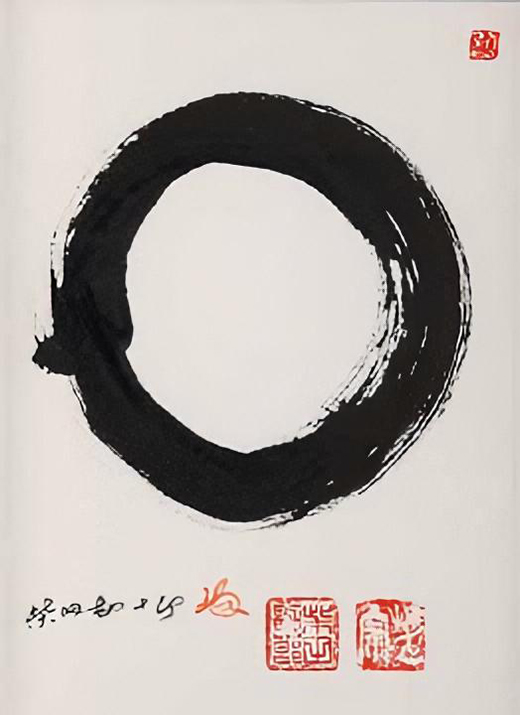UK Startup ENSO Tire Reinvents the Wheel
We are at the beginning of a sea change in product design and manufacturing that can lead us to a circular zero carbon economy. Massive opportunities abound and ENSO CEO Gunnlaugur Erlendsson has a first mover advantage.
When tires make contact with the road, tiny particles are worn away by friction. Two billion tires are produced globally every year. The extra weight of EVs caused by their heavy batteries means that tire pollution is becoming a bigger problem. Their increased torque from electric powertrains causes the tires to wear out approximately 30% faster, shedding microbits of synthetic rubber. Traditional tire manufacturers have not been able to address the situation.
by Kanjuro Shibata
In Zen, an enso is a circle that is hand-drawn in one uninhibited brushstroke to express a moment when the mind is free to let the body create.
ENSO has a systemic solution that solves the tire pollution problem without creating other problems or unintended consequences. Most tires today are manufactured from oil and carbon black and silica, and require the raw materials to be cooked at high temperatures – which is an energy intensive process. From the moment a tire is installed on a vehicle it wears down. Where the synthetic rubber meets the road, it generates tire pollution from braking and turning.
Tires contain about 200 different chemicals. Many are derived from crude oil. One of those chemicals is especially problematic – 6PPD. 6PPD is a chemical widely used as a stabilizing additive (or antidegradant) that reduces cracking. It is found in all tires. As tires shed micro particles on our roads, 6PPD (and other chemicals in the synthetic rubber) find their way into our air and water. We breathe that air and 6PPD has been found in human urine and body tissues. It also is toxic to fish and can kill them when at a high enough dosage. Die offs of Cohoe Salmon in southern California have been traced to 6PPD. Tire pollution is the largest source of microplastics in our oceans. This year, California is expected to be the first authority to demand tire-makers demonstrate they are seeking an alternative to 6PPD.
“The unintended consequence of electric cars is we’ll have more tire pollution unless we make better tires,” said ENSO’s Erlendsson. ENSO tires emit 35% less pollution than premium EV tires from major manufacturers. He says this is because ENSO uses higher-quality, more expensive materials to make the tires more durable. They still contain 6PPD, but fewer particles shed means less 6PPD. ENSO has a zero 6PPD tire in R&D. Finding a replacement for 6PPD is difficult because any new chemical must prevent tires degrading and cracking without affecting other attributes.1
“Tires are a compromise between safety, noise, handling and abrasion”, said Adam McCarthy, secretary general of the European Tire and Rubber Manufacturing Association.2
Profit from Quality Not Quantity
ENSO has established a circular economy business model that rents out tires that it takes back to recycle when the treads are worn. ENSO does not sell through wholesalers or retailers. They don’t sell at all. They charge for their tires by the mile, and then reclaim the tires when it’s time. ENSO swaps out the old tires and replaces them with new tires, then recycles the old tires to make even newer ones. That’s important because it’s a new business model that incentivizes ENSO to make tires that last far longer.
Traditional manufacturers have an incentive to make tires that are cheaper to buy and must be replaced more often… leading to more waste and pollution. ENSO delivers a huge financial incentive for clients to cause less environmental pollution and health hazards.
It is easier for ENSO, as a startup, to launch with a new business model. The traditional manufacturers have sunk costs and aging factories, and they have to feed their established distribution channels. This is the legacy problem they have. They have to engineer a systems change beyond designing and manufacturing a new type of tire.
EV fleet owners, the Royal Mail (an ENSO client) for example, have a lower cost of maintaining their fleets than they did with ICE fleets. Maintenance of EVs is cheaper. Cost per mile for fuel use is cheaper. But the traditional tires wear out faster and have to be replaced more often. That is a pain that London-based ENSO relieves.
“The advent of the EV is the time to make this change to improve tires,” Erlendsson said. “We’re never going to end up having zero tire pollution, but we can reduce it.”2
2 https://www.racinggreenpodcast.com/episodes/enso


